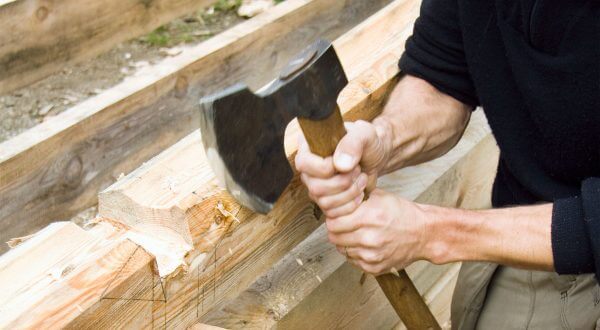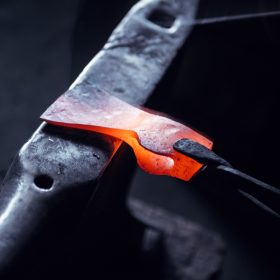We are often asked about what type of axe to choose. When making your choice, it is important to decide what the axe will be used for. Will it be used for chopping wood, out in the forest or to make a log house? The axe is one of mankind’s oldest tools and therefore comes in all sorts of shapes and sizes.
The main difference between axes is the edge. Most commonly, the edge faces the direction of travel, parallel with the handle. There are also axes where the edge is perpendicular, although these are less common. Examples include Gränsfors Bruk’s Straight Adzes and Gutter Adzes.
There is a big difference between chopping axes and carving axes. The shape and edge of a chopping axe are designed to chop away wood fibres and split the wood apart, while a carving axe has to slice into the wood.
A typical chopper is Gränsfors Bruk’s Splitting Axe, which has quite a thin edge but a much broader and thicker poll. This helps to split the wood apart. A prime example of a carving axe is Gränsfors Bruk’s Carpenter’s Axe. This has a long, thin and straight edge with a straight, pointed bevel face and a narrower poll, which makes it perfect for carving. The Carpenter’s Axe is not suitable for heavier work such as tree felling and log splitting. The pointed angle of the blade is not designed for that.
Nowadays, axes are used primarily as tools and form three main groups: Forest Axes, Splitting Axes and Log-building Axes. There are also some less common types of axe, such as the meat cleaver used in the kitchen, the ice pick used in mountain climbing and the fireman’s fire axe.
Whatever use the axe is going to be put to, the key is to use the right axe for the right task.
Olika yxtyper
- Shepherd’s axe

Shepherd’s axe
- Franziska

Franziska
- Log-building and Carpentry Tools

Log-building and Carpentry Tools
- Ice pick

Ice pick
- The miner´s axe

The miner´s axe
- Ancient Axes

Ancient Axes
- Splitting Axes

Splitting Axes
- Double Bit Axes

Double Bit Axes
- Forest Axes

Forest Axes
- Tomahawk – Trade axes

Tomahawk – Trade axes

























